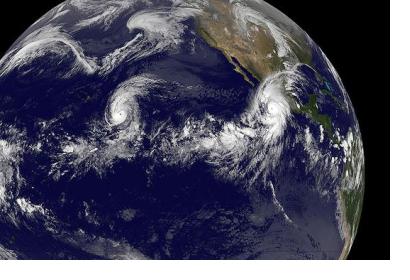The ongoing El Niño event is already classed as one of the strongest in recent decades. El Niño usually peaks around Christmas and has in the past been known to cause prolonged droughts and extreme rainfall events in several regions of the world. These consequences have further negative effects on food security, infrastructure, water availability, and people’s livelihoods. Because El Niño is a recurring event and because of past experiences, areas that are usually hit the hardest have now taken actions to mitigate its effects.
Latin America is already experiencing a number of extreme weather events during the last recent months. Several areas in Central America have been hit by drought, affecting around 3.5 million people and leaving more than 2 million people needing food aid. The situation is aggravated due to the lack of rainfall since 2014. Other areas affected by the same event include communities in Colombia, Venezuela and northeastern Brazil. As a result, a noticeably intense outbreak of wildfires has been registered throughout the Amazon. In contrast, areas of southern Latin America, especially Argentina, Uruguay and Paraguay, have had to deal with heavy rainfall and flooding during the last six months. There are concerns that El Niño will intensify these events. The United Nations Office for the Coordination of Humanitarian Affairs (OCHA) has issued a report stating that 13.2 million people were affected by natural disasters between January and October 2015, and warns that the situation could become worse due to the current El Niño event.
At a recent forum, held in La Paz, Bolivia, was used to discuss the potential impacts of the current El Niño in South America. Experts commented that Latin America is better prepared to deal with the consequences. According to Juan José Nieto, Head of Climate Services at the International Research Centre on El Niño (CIIFEN), “there is a coordination of authorities on a regional scale, with every authority making efforts to gather available information and take appropriate measures, to the extent each country is able to do so”. He also stated that “the region is better prepared, or at least better informed to confront the impacts of El Niño”. In addition, Luis Noriega, the Director of Bolivia’s National Meteorology and Hydrology Service (Senamhi), added that national authorities now have greater access to data and other types of resources such as satellite data, computer modeling and an increased number of weather stations. He stressed the importance of using these resources to elaborate more accurate forecasts and thus be able to better prepare the general public for this El Niño event.
For further reading please visit: http://www.pulsamerica.co.uk/2015/12/07/latin-america-better-prepared-for-el-nino/

